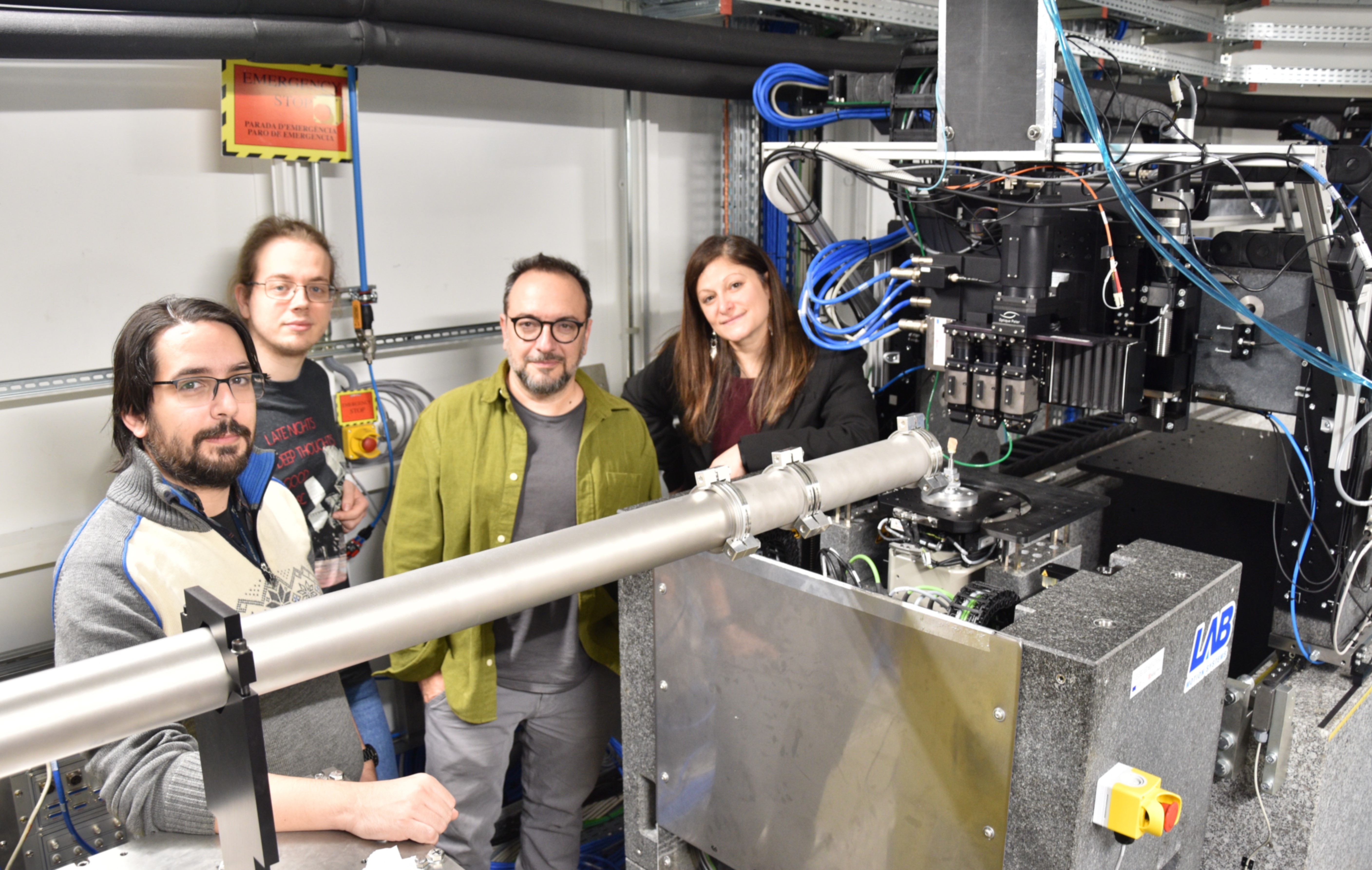ALBA Synchrotron

At the end of 2024, FaXToR beamline has paved its way to user operation by leading to the first friendly users data collection and analysis. With three friendly users, the beamline has demonstrated its performance in several applications.
FaXToR has explored the beamline performances in a range of fields, from biomedicine to paleonthology to material science. The first three friendly users, covering the different disciplines, have been hosted at FaXToR for a total of 27 shifts.
Biomedical application
In collaboration with a group of 3 scientists from Universitat Pompeu Fabra and Hospital Clinic de Barcelona, a total of six rat liver samples, embedded in paraffin, have been scanned at the beamline in order to study the inner structural changes of rat liver in different pathological conditions.
Each sample has been scanned with 1.3 um pixel size and 25 keV monochromatic beam energy. Sample to detector distance has not been optimized for this run but further measurements of the same sample will be conducted in the incoming commissioning period in order to push the phase contrast capabilities of the beamline. On the other side, a protocol for local tomographic acquisition and full-field reconstruction based on NR Stitcher algorithm has been employed for the first time at the beamline.
With the advent of FaXToR, ALBA aims at providing a multiscale multimodal protocol contributing to the fight against rare pathologies, thus supporting the biomedical community.

First friendly users at the FaXToR control room together with the beamline scientists. From left to right: Genís Campreciós (IDIBAPS), Alessandra Patera (FaXToR Group Leader), Bart Bijnens (UPF), Mariana Seabra (UPF), Federico Cova and Victorien Bouffetier (beamline scientists).
Rat liver scanned at FaXToR beamline, at the ALBA Synchrotron.

2D slice of a region of interest (of size 1.9x1.8 mm2) from one reconstructed volume of a cirrhotic liver sample (cm-sized).
Paleonthological application
The origin of angiosperms, or flowering plants, was an abominable mystery for Darwin. FaXToR will help scientists from the Universidad Autónoma de Madrid, guided by Dr. Jesús Marugán, to unravel internal information, such as the microvascular structures, of the wetland fossils plants of Las Hoyas (Cuenca, Spain). A number of samples of different size have been scanned within the allocated beamtime. Depending on the sample, the beamline parameters, such as filtering, energy and resolution have been tuned.
Scientists from UAM have been awarded 200,000 euros Project within the national call ‘Proyectos de Generación de Conocimiento 2023’, in which a beamline member, Federico Cova, is part of the research team to conduct further studies towards the discovery of Las Hoyas ecosystem. FaXtoR will take part in the scanning of selected fossils to obtain morphological information for taxonomic and biological age diagnosis, thus exploring its performance in the paleontological applications.

Jesús Marugán (UAM) while placing a sample on top of the tomographic stage.

Volume rendering of a plant with two reconstructed orthotropic slices at different planes.
Material Sciene
The green and sintered state of binder jetted specimens have been investigated at FaXToR, with the scope to determine the internal structure (layer distribution, particle distribution, porosity, interconnectivity of porosity) in both states. Measurements have been conducted with 1 um resolution and 45 keV monochromatic energy. Up to 10 samples have been scanned.

Left: volume rendering of a binder jitted specimen with a 2D view on the right.

